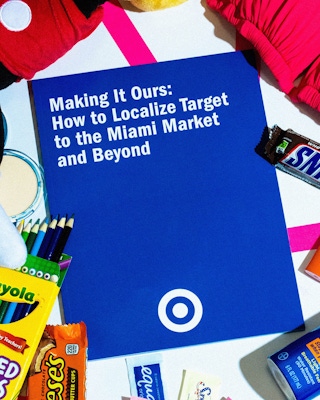
Exploring Localization
As with all national retailers, Target had questions around how to create greater local market relevance ©. For years through its philanthropy, Target gave back to local communities but this localization did not extend to in-store product assortment or engagement experiences. The challenge stemmed partly from logistics and partly from a lack of systems to empower stores with the ability to affect brand behaviors at a local level.
Segmenting Shoppers and Communities
One of the most beloved brands in America, Target occupies a very special place in its guests’ hearts and minds. Building on its strengths, Target realized that to positively impact its guests' lives even more, it needed to better anticipate and attempt to satisfy their unmet needs. The realization that a guest's needs at one location could be radically different from a store 20 miles away supported this objective. As such, Combo developed a design model that would allow for addressing guest needs not on a market basis but at a store level.
We don’t go to Target to get what we need. We go to Target to find out what we want.

Connecting Store and Shopper Needs
Retailers lead hectic lives, and the management of a store is a highly complex web of interconnected tasks and demands. As such, Combo needed to avoid adding complexity to the daily lives of local guests while working to help the store better serve them. The solution was to provide each store with a program of products and services that it could, with one click, select for the store. Executional considerations, design elements and implementation variables were all pre-made to minimize the burden on stores.
With empowerment comes instruction and education.

Brand Consistency Managed Locally
A very real concern of national brands is how to empower local activation without being prescriptive in implementation. The solution developed by Combo strategists was to focus on empowering local stores with the tactical selection of localization elements while maintaining brand design language control at the master brand level.
Target hits the mark by going beyond cheap and chic.
In-Market Testing
After selecting a major DMA as a test market, Combo strategists tested this deployment model to learn if it truly empowered local stores to execute in-store activities most relevant to their local communities while staying true to Target’s master brand guidelines and requirements.

New business: Connect with a partner.
Job inquires: View our handbook.
Newsletter©: Sign up.
Combo
76 Bowery, 3rd Floor
NYC, 10013
Social Media
Instagram, LinkedIn
View our show reel:
Watch video
General inquiries:
hello@combo.co
Media inquires:
press@combo.co